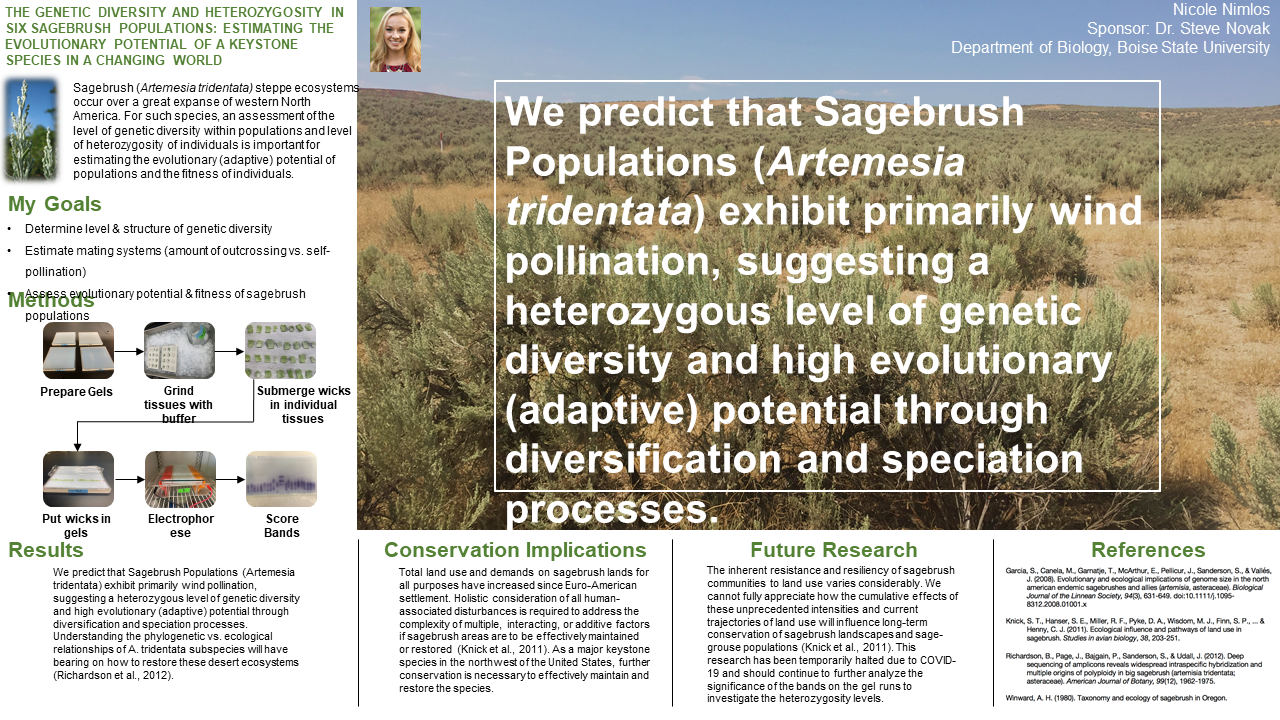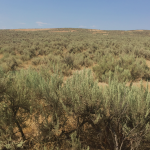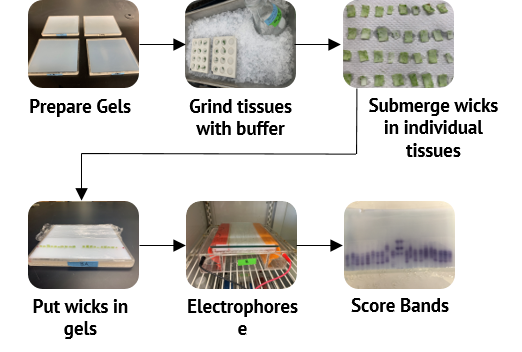Estimating the Evolutionary Potential of a Keystone Species in a Changing World
Nicole Nimlos, Dr. Steve Novak

We predict that Sagebrush Populations (Artemesia tridentata) exhibit primarily wind pollination, suggesting a heterozygous level of genetic diversity and high evolutionary (adaptive) potential through diversification and speciation processes.

Sagebrush (Artemesia tridentata) steppe ecosystems occur over a great expanse of western North America. For such species, an assessment of the level of genetic diversity within populations and level of heterozygosity of individuals is important for estimating the evolutionary (adaptive) potential of populations and the fitness of individuals.
My Goals
- Determine level & structure of genetic diversity
- Estimate mating systems (amount of outcrossing vs. self-pollination)
- Assess evolutionary potential & fitness of sagebrush populations
Methods

- Prepare Gels
- Grind tissues with buffer
- Submerge wicks in individual tissues
- Put wicks in gels
- Electrophorese
- Score Bands
Results
We predict that Sagebrush Populations (Artemesia tridentata) exhibit primarily wind pollination, suggesting a heterozygous level of genetic diversity and high evolutionary (adaptive) potential through diversification and speciation processes. Understanding the phylogenetic vs. ecological relationships of A. tridentata subspecies will have bearing on how to restore these desert ecosystems (Richardson et al., 2012).
Conservation Implications
Total land use and demands on sagebrush lands for all purposes have increased since Euro-American settlement. Holistic consideration of all human-associated disturbances is required to address the complexity of multiple, interacting, or additive factors if sagebrush areas are to be effectively maintained or restored (Knick et al., 2011). As a major keystone species in the northwest of the United States, further conservation is necessary to effectively maintain and restore the species.
Future Research
The inherent resistance and resiliency of sagebrush communities to land use varies considerably. We cannot fully appreciate how the cumulative effects of these unprecedented intensities and current trajectories of land use will influence long-term conservation of sagebrush landscapes and sage-grouse populations (Knick et al., 2011).
This research has been temporarily halted due to COVID-19 and should continue to further analyze the significance of the bands on the gel runs to investigate the heterozygosity levels.
References
- Garcia, S., Canela, M., Garnatje, T., McArthur, E., Pellicur, J., Sanderson, S., & Valles, J. (2008). Evolutionary and ecological implications of genome size in the north american endemic sagebrushes and allies (artemisia, asteraceae). Biological Journal of the Linnean Society, 94(3), 631-649. doi: 10.1111/j.1065-8312.2008.01001.x
- Knick, S.T., Hanswer, S. E., Miller, R. F., Pyke, D. A., Wishom, M. J., Finn, S. P., … & Henny, C. J. (2011). Ecological influence and pathways of land use in sagebrush. Studies in avian biology, 38, 203-251.
- Richardson, B., Page, J., Bajgain, P., Sanderson, S., & Udall, J. (2012). Deep sequencing of amplicons reveals widespread intraspecific hybridization and multiple origins of polyploidy in big sagebrush (artemisia tridentata; asteraceae). American Journal of Botany, 99(12), 1962-1975.
- Winward, A. H. (1980). Taxonomy and ecology of sagebrush in Oregon.
Additional Information
For questions or comments about this research, contact Nicole Nimlos at nicolenimlos@u.boisestate.edu.